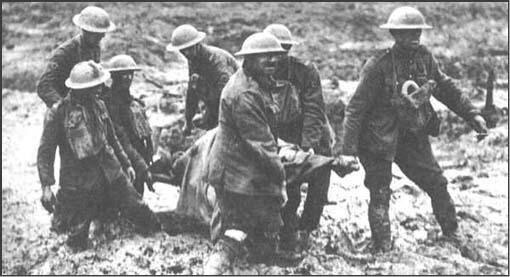Despite the many thousands in the UK who thought it was their patriotic duty to enlist and fight the enemy at the start of the war, there were many ordinary people who objected to the war on moral or religious grounds.
Conscription
When the war effort needed more men to join the armed services, the government passed laws that made military service compulsory for men of certain ages and in certain jobs. This ‘conscription’ enlisted an extra two-and-a-half million British troops from 1916 onwards.
Conscientious Objectors
Those who disagreed with fighting on moral or religious grounds could appeal before a military tribunal and make their case against being forced to fight. Those who appealed on these grounds were known as Conscientious Objectors or COs. There were over 16,000 Conscientious Objectors in World War One and they were mainly men. They were often brave as they had to make public their stand against fighting and many of the general public had a very low opinion of them and saw them as cowards. They were known as ‘Conchies’. As the war went on, and reports came home of the thousands of dead and wounded, so increasingly strong resentment against these ‘Conchies’ built up from those families who had suffered the loss of sons, husbands and fathers.
Conscientious Objectors in Rossendale
In the Rossendale Free Press of 6th May 1916 there is report of 12 Conscientious Objectors from Rawtenstall, Cloughfold, Waterfoot and the Whitewell Valley appearing in Rawtenstall Police Court on Lord Street after being arrested the previous day as absentees under The Military Service Act.
A large crowd gathered outside the court, but only a third gained admittance to the public gallery before it was full and the doors were closed.
The magistrates who heard the cases were Mr Joseph Grimshaw and Councillor Compston. Superintendent Fyfe told the court that the men were charged under Section 15 of The Military Service Act. Each of the men had received a notice from the military authorities to report at 9.00 on 2nd of May at Rawtenstall Recruiting Office and had failed to do so.
One defendant Tom Parkinson said the reason he failed to turn up was because he was a conscientious objector to military service. He was not a soldier and no man could make him one without his consent.
Another of the defendants, William Walsh, had already been before an Appeal Tribunal and had been granted an exemption on condition he served in the forces in a non combat role, e.g as a stretcher bearer, but he objected to any kind of military service. He was arrested at his home and when asked by P.C. Smith why he had not reported for military service he replied,’ It is against my conscience.’
Another defendant, when told by Superintendent Fyfe that under the The Military Service Act he was deemed to have enlisted in His Majesty’s Forces, replied, ‘That has nothing to do with it. If the Government deemed me to be married, should I be married?’
The men were all conveyed to Preston under escort with scenes of protest against them in the streets. It is not known what happened to these 12 Conscientious Objectors, but the outcomes would have most certainly been one of those described below.
The Silver War Badge
During the early years of the war, some women encouraged men of a fighting age to join the armed forces. One of the ways some women did this was by public humiliation of men of a fighting age not in uniform; the unfortunate men were flamboyantly presented with white feathers. The white feathers were intended to show everyone that these men were considered cowards for not joining the army.
As the war progressed and more and more men returned badly wounded, unable to return to fight, the injured were honourable discharged back to civilian life. These men dressed in ‘civvies’ sometimes suffered from humiliation and hostility by being unfairly presented with white feathers.
To help stop this public disgrace these men were awarded a new decoration, The Silver War Badge. This large sterling silver lapel badge was only to be worn on civilian clothes, not military uniform. Around the rim was inscribed: ‘+ FOR KING AND EMPIRE + SERVICES RENDERED’. This decoration clearly marked out these men as returning heroes who should be thanked not shamed.
Choices
If the arguments of individual Conscientious Objectors were rejected by the military appeal tribunals it lead to a difficult choice, answer the ‘call up’ to be drafted into the armed forces or wait to be arrested? Often Conscientious Objectors were sent to jail for their beliefs. Some were sent to the front, and if they did not fight or disobeyed orders could be shot. Some were given ‘conditional exemptions’ if they joined ambulance units at the front. Others were made to take on work of national importance on the roads and land, on the equivalent of a soldier’s wage, often being sent many miles away from where they lived.
Stretcher Bearers
Those Conscientious Objectors given ‘conditional exemptions’ often joined ambulance units serving in very dangerous jobs at or near front. They often performed essential tasks, such as stretcher bearers.
There were four stretcher bearers per company of soldiers and their jobs were to carry wounded men back to the medical units. Often they would have to go into no-mans’ land to collect the wounded and dying and carry them back to their lines. In good conditions two men could carry a wounded soldier on a stretcher, but in heavy cloying mud it might take four stretcher-bears to carry a wounded soldier.
When troops attacking enemy lines they were not allowed to stop and care for any of their friends or fellow soldiers who were wounded. Any wounded soldier had to treat his own wounds with an emergency dressing kit and then to wait until the stretcher-bearers arrived. There could be a long wait and to seek protection sometimes injured soldiers dragged themselves into shell-holes, but this was dangerous as there was the strong possibility of drowning in the deep mud at the bottom of the shell crater.
There is one tale of a soldier suffering with leg wounds who with his hands dragged himself backwards for two days, until finally he reached the safety of his own lines.


Leave A Comment